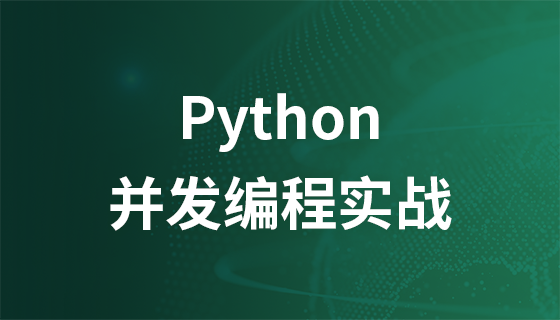goroutine泄漏指goroutine无法正常结束,长期占用资源导致程序崩溃。解决方案包括:1.context控制:使用context.withcancel或context.withtimeout创建可取消的上下文,在goroutine中监听context.done()通道并在接收到信号后退出;2.通道关闭:在不再发送数据时关闭通道,接收方通过for...range自动退出;3.sync.waitgroup:调用add(1)和done()配合wait()确保所有goroutine完成;4.超时机制:结合time.after与select语句防止阻塞;5.错误处理:使用recover捕获panic以避免程序崩溃。

Golang并发编程中,goroutine泄漏是指启动的goroutine因为某些原因无法正常结束,长期占用资源,最终可能导致程序崩溃。避免goroutine泄漏的关键在于理解goroutine的生命周期,并掌握资源回收技巧,确保每个goroutine在完成任务后能够安全退出。

解决方案:

Context控制: 使用context.Context控制goroutine的生命周期。通过context.WithCancel、context.WithTimeout等函数创建带有取消信号的context,当需要结束goroutine时,调用cancel()函数,goroutine监听context.Done()通道,接收到取消信号后执行退出逻辑。
立即学习“go语言免费学习笔记(深入)”;
package main
import (
"context"
"fmt"
"time"
)
func worker(ctx context.Context, id int) {
defer fmt.Printf("Worker %d exiting\n", id)
for {
select {
case <-ctx.Done():
fmt.Printf("Worker %d received cancel signal\n", id)
return
default:
fmt.Printf("Worker %d doing work\n", id)
time.Sleep(time.Second)
}
}
}
func main() {
ctx, cancel := context.WithCancel(context.Background())
for i := 1; i <= 3; i++ {
go worker(ctx, i)
}
time.Sleep(3 * time.Second)
cancel() // 发送取消信号
time.Sleep(time.Second) // 等待goroutine退出
fmt.Println("Program exiting")
}通道关闭: 如果goroutine通过通道接收数据,确保在不再需要发送数据时关闭通道。接收方可以通过for...range循环遍历通道,当通道关闭时,循环会自动结束,goroutine即可退出。

package main
import (
"fmt"
"time"
)
func receiver(ch <-chan int, id int) {
defer fmt.Printf("Receiver %d exiting\n", id)
for val := range ch {
fmt.Printf("Receiver %d received: %d\n", id, val)
}
fmt.Printf("Receiver %d channel closed\n", id)
}
func main() {
ch := make(chan int, 10)
for i := 1; i <= 2; i++ {
go receiver(ch, i)
}
for i := 0; i < 5; i++ {
ch <- i
time.Sleep(time.Millisecond * 500)
}
close(ch) // 关闭通道
time.Sleep(time.Second)
fmt.Println("Program exiting")
}sync.WaitGroup: 使用sync.WaitGroup等待所有goroutine完成。在启动goroutine之前,调用Add(1),在goroutine退出时,调用Done(),主goroutine调用Wait()阻塞,直到所有goroutine都调用了Done()。
package main
import (
"fmt"
"sync"
"time"
)
func worker(id int, wg *sync.WaitGroup) {
defer wg.Done() // goroutine退出时调用Done()
defer fmt.Printf("Worker %d exiting\n", id)
fmt.Printf("Worker %d starting\n", id)
time.Sleep(time.Second)
fmt.Printf("Worker %d done\n", id)
}
func main() {
var wg sync.WaitGroup
for i := 1; i <= 3; i++ {
wg.Add(1) // 启动goroutine前调用Add(1)
go worker(i, &wg)
}
wg.Wait() // 等待所有goroutine完成
fmt.Println("All workers done")
}超时机制: 为goroutine设置超时时间,防止goroutine因为某些原因一直阻塞。可以使用time.After结合select语句实现超时机制。
package main
import (
"fmt"
"time"
)
func longRunningTask(ch chan string) {
time.Sleep(5 * time.Second) // 模拟耗时操作
ch <- "Task completed"
}
func main() {
ch := make(chan string)
go longRunningTask(ch)
select {
case result := <-ch:
fmt.Println(result)
case <-time.After(2 * time.Second):
fmt.Println("Task timed out")
}
fmt.Println("Program exiting")
}错误处理: 在goroutine中进行错误处理,避免因为panic导致goroutine无法正常退出。可以使用recover捕获panic,并进行相应的处理。
package main
import (
"fmt"
"time"
)
func worker(id int) {
defer func() {
if r := recover(); r != nil {
fmt.Printf("Worker %d recovered from panic: %v\n", id, r)
}
fmt.Printf("Worker %d exiting\n", id)
}()
fmt.Printf("Worker %d starting\n", id)
// 模拟可能panic的情况
panic("Something went wrong")
fmt.Printf("Worker %d done\n", id) // 这行代码不会执行
}
func main() {
go worker(1)
time.Sleep(time.Second)
fmt.Println("Program exiting")
}如何使用select语句优雅地处理多个通道?
select语句是Golang中处理并发的重要工具,它允许goroutine同时监听多个通道,并在其中一个通道准备好时执行相应的操作。使用select可以避免goroutine阻塞在某个通道上,提高程序的并发性能。
package main
import (
"fmt"
"time"
)
func main() {
ch1 := make(chan string)
ch2 := make(chan string)
go func() {
time.Sleep(2 * time.Second)
ch1 <- "Message from channel 1"
}()
go func() {
time.Sleep(1 * time.Second)
ch2 <- "Message from channel 2"
}()
for i := 0; i < 2; i++ {
select {
case msg1 := <-ch1:
fmt.Println("Received from channel 1:", msg1)
case msg2 := <-ch2:
fmt.Println("Received from channel 2:", msg2)
}
}
}select语句的几个关键点:
select会随机选择一个执行。default分支: 如果所有通道都未准备好,且存在default分支,则执行default分支,避免阻塞。default分支,则select语句会阻塞,直到至少有一个通道准备好。理解defer的执行顺序和使用场景?
defer语句用于延迟执行函数调用,它会在包含defer语句的函数执行完毕后,按照defer语句的逆序执行。defer常用于资源释放、错误处理等场景。
package main
import "fmt"
func main() {
defer fmt.Println("Deferred call 1")
defer fmt.Println("Deferred call 2")
fmt.Println("Main function")
}输出结果:
Main function Deferred call 2 Deferred call 1
defer的常见使用场景:
资源释放: 在打开文件、数据库连接等资源后,使用defer关闭资源,确保资源在使用完毕后能够及时释放。
package main
import (
"fmt"
"os"
)
func main() {
file, err := os.Open("example.txt")
if err != nil {
fmt.Println("Error opening file:", err)
return
}
defer file.Close() // 确保文件关闭
// ... 使用文件
fmt.Println("File opened successfully")
}错误处理: 使用recover捕获panic,并进行相应的处理,避免程序崩溃。
package main
import "fmt"
func main() {
defer func() {
if r := recover(); r != nil {
fmt.Println("Recovered from panic:", r)
}
}()
// 模拟可能panic的情况
panic("Something went wrong")
}如何使用go vet和go lint进行代码质量检查?
go vet和go lint是Golang提供的代码静态分析工具,用于检查代码中潜在的问题,提高代码质量。
go vet: go vet是Golang自带的静态分析工具,它可以检查代码中常见的错误,例如未使用的变量、错误的格式化字符串等。
go vet ./...
go lint: go lint是一个第三方静态分析工具,它可以检查代码风格是否符合Golang的规范,例如变量命名、注释等。 首先需要安装golint:
go install golang.org/x/lint/golint@latest
然后运行:
golint ./...
通过定期运行go vet和go lint,可以及时发现并修复代码中的问题,提高代码质量和可维护性。
以上就是Golang并发编程如何避免goroutine泄漏 掌握Golang中的资源回收技巧的详细内容,更多请关注php中文网其它相关文章!

每个人都需要一台速度更快、更稳定的 PC。随着时间的推移,垃圾文件、旧注册表数据和不必要的后台进程会占用资源并降低性能。幸运的是,许多工具可以让 Windows 保持平稳运行。




Copyright 2014-2025 https://www.php.cn/ All Rights Reserved | php.cn | 湘ICP备2023035733号